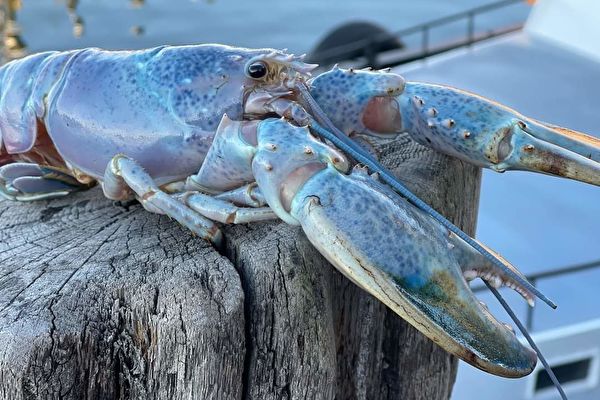In late July, a lobster fisherman off the coast of New Hampshire caught a “cotton candy” lobster, displaying vibrant pink, purple, and blue colors, with odds of just one in a hundred million.
The 25-year-old man who caught this rare lobster, Joseph Krame, donated it to the Seacoast Science Center in Rye, New Hampshire.
Karen Provazza, a staff member at the Seacoast Science Center, informed Live Science via email that the lobster is healthy, stable, and eating well, and can now be displayed to the public there.
Lobsters typically have mottled brown coloration, aiding in their camouflage on the seabed. However, lobsters can also exhibit various rare colors, including orange, blue, and even dual-tone variations.
All lobsters absorb a red pigment called astaxanthin, which comes from plants and smaller crustaceans in their diet. It is this pigment that gives lobsters their bright red color after cooking and their natural mottled brown appearance.
Color variations in lobsters stem from genetic mutations, though such mutations are rare. The odds of a blue lobster, for example, are around two million to one.
The “cotton candy” lobster is even rarer, with odds of approximately one in a hundred million. The exact genetic reason for this coloration is still unclear, but Provazza suggested that some disruption in the normal pigment deposition process may increase the visibility of more red astaxanthin through the blue layer, resulting in a blend of pink and purple on a blue background, resembling cotton candy.
Aside from genetic factors, diet can also influence lobster coloration. For instance, if lobsters primarily feed on fish bait, they may ingest less astaxanthin compared to a diet rich in shrimp and crab that are high in the pigment.
Why are these color variants in lobsters so rare? Firstly, the rate of mutations behind these variations is incredibly low. Additionally, brightly colored lobsters are less adept at hiding on the seabed, making them more prone to predation and thus reducing the likelihood of them surviving long enough to pass on their genes.
This “cotton candy” lobster is estimated to be 8 to 10 years old and will spend the rest of its life at the Seacoast Science Center in New Hampshire.

